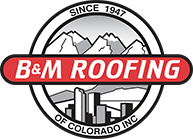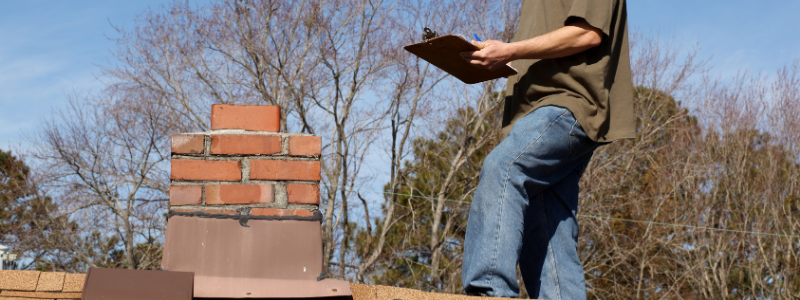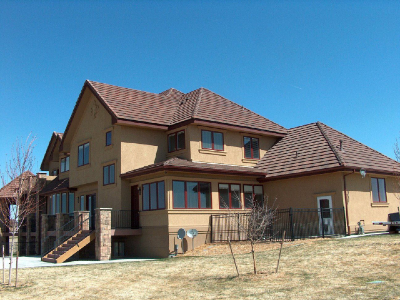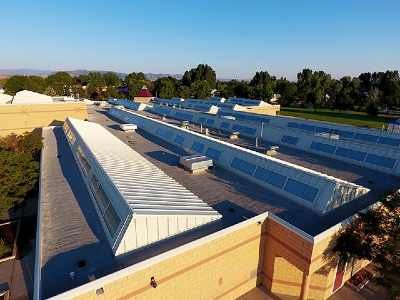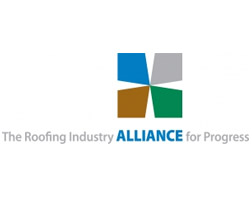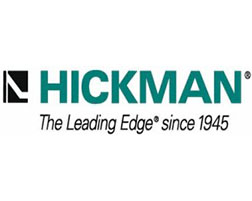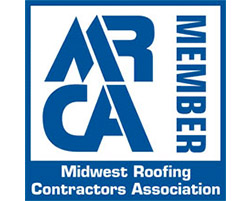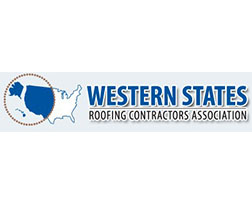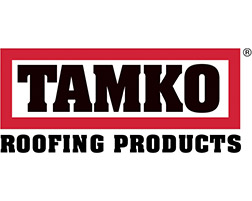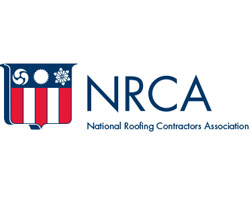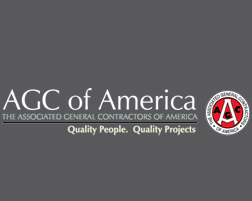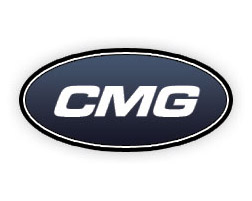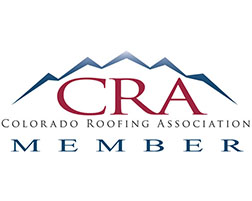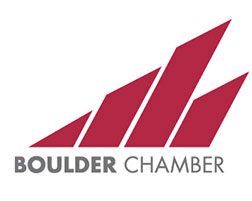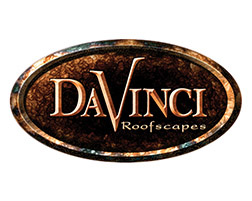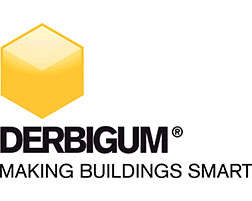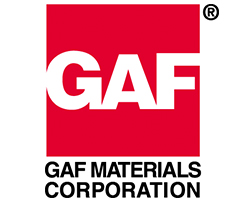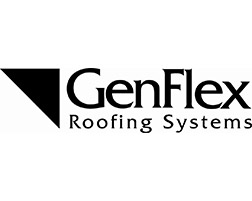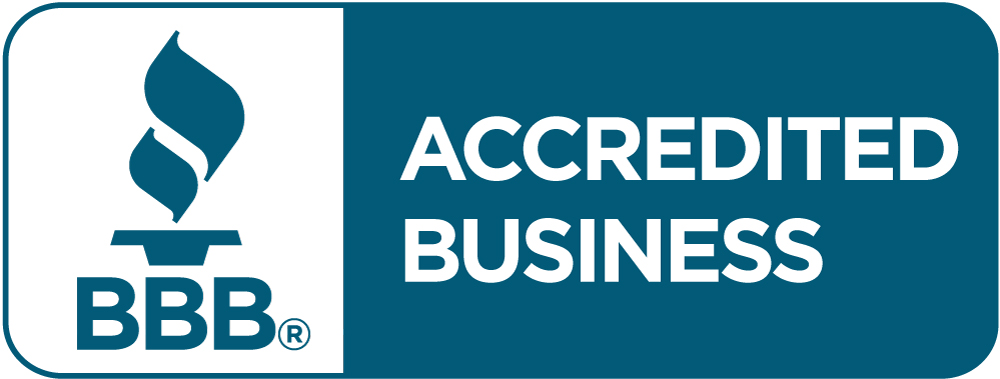Importance of Roof Inspections
Your home’s roof may not always be top-of-mind, especially when it comes to around-the-house maintenance or a “honey-do” list. There are so many other things that require your attention, like that new deck you have designed, the garden area, perhaps new sod, or remodeling a bathroom or kitchen. However, when it comes to protecting the investment in your home, we’d argue that your roof is the single most important part of your house. When your roof is damaged or compromised, it can cause major damage to the rest of the home. That’s why we emphasize the importance of roof inspections – regular maintenance and inspections can help detect damage and even prevent further damage from happening to your home.
Perhaps you do keep up on roof maintenance, but as Colorado’s weather can be hard on the roof, you have concerns about how your roof is holding up following a hail storm or harsh winter. While you can assess major damage on your own, a professional roof inspector provides insight and expertise that most homeowners can’t muster.
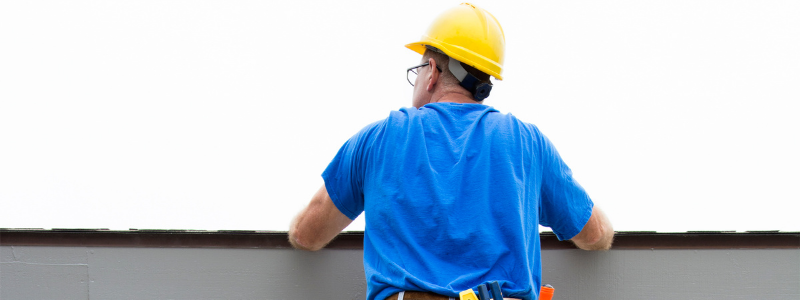
What Is the Importance of Roof Inspections?
Just like it’s great to have routine inspections on your car, your teeth, eyes, and just about anything else, roof inspections are important in understanding the condition of your roof.
Roof inspections can help point out your roof’s:
- Age
- History
- Weaknesses
- Strengths
- Awkward shapes
- What type of shingle may be best for your roof
Knowing and understanding these things about your roof can help prolong its lifespan and durability. Roof inspectors will then be able to recommend the right type of repairs or whether a replacement is needed. The importance of roof inspections is equal to the amount of money you spend on your roof.
Either you have minor maintenance and routine inspections or you’ll have major repairs and roof replacements. That’s also why a professional roofer should be routinely inspecting your home’s roof.
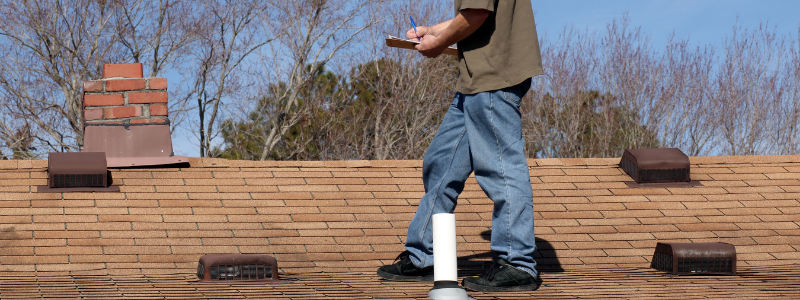
What Do Professional Roof Inspectors Look For?
Following a major storm, you may feel inclined to try and save money and inspect the roof yourself. While we don’t discourage this, we do not recommend you get up on the roof to do so. Of course, you can take a survey of your roof from the ground, but not always do homeowners know what to look for. If you spot nothing but still have concerns, it’s time to call a professional roof inspector. You’ll benefit from their professional insight.
Professional roofers will also usually start with a quick survey of your roof’s health from the ground. Using our own equipment, we look for the obvious signs of distress (and they know what they’re looking for): missing shingles, changes in color, ripped shingles, major damage caused by falling branches.
When inspecting your roofs, a professional roofer will perform a few things, depending on the health and condition of the roof.
Surface assessment
- Hail damage may be hard to spot, and experts know how to evaluate the remaining lifespan of shingles, grain levels and locate hail-strike damage. Experts will also look for discolored, warped, or missing shingles, as that’s an early sign there may be water damage. Any debris on the roof may have caused a shingle to come loose, as well.
Ventilation
- Keeping air moving through your attic is important, and experts can quickly assess if vents are working to the capacity your home requires. Roofers will inspect all roofing vents, insulation, and other roofing materials that help assist in proper roof ventilation.
Insurance claims
- If your roof is damaged, you’ll need a professional to itemize and properly describe the damage. An expert may ask for a history of past insurance claims if there are any. Professional roofers will also guide you through each step of an insurance claim and keep you well-informed
Structural survey
- It’s even more difficult to see the damage under shingles than spot superficial damage. If your roof is losing structural integrity, it can lead to larger problems down the line. Identifying these issues and addressing them is critical.
Safety First:
- It’s always best to leave the professionals to climbing ladders and walking on a sloped roof, so please don’t risk your health self-inspecting. Expert roofers will have the proper equipment and training to know how to maneuver around your roof.
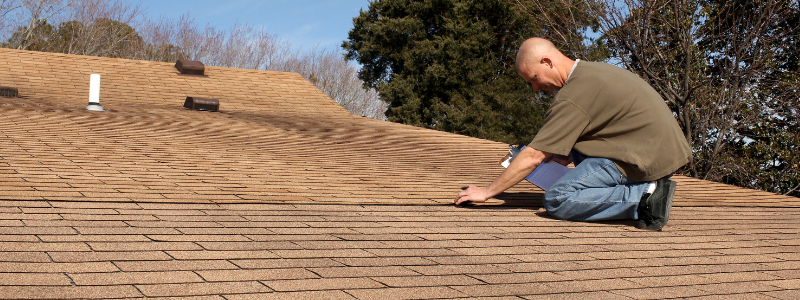
How Often Should Roofs Be Inspected?
Roofs are made to last anywhere from 20 to 50 years. The more proactive a homeowner is with maintenance and inspections, the longer the roof will last. Hence the importance of roof inspections – a small investment into a routine inspection will save you money in the long run.
So, just how frequent is “routine?” Generally speaking, we recommend a professional roof inspection at least once a year, if not twice. The best times to get your roof inspected are in the spring and summer months, right before harsher weather approaches (hail in the summer and snow in the winter).
In Colorado, roof inspections are especially important. Between the sun, hot, dry air, hail, rain (the very little these days), and snow, roofs take quite the punishment from the harsh, extreme weather. The more proactive you can be with roof inspections, the better off your roof – and consequently, your home – will be.
Colorado’s Professional Roof Inspectors
B&M Roofing of Colorado provides free, no-obligation professional roof inspections to homeowners in Denver and Boulder.
As native Coloradans, we’ve seen our fair share of damaged roofs. We know what weathered, old, or damaged roofs look like – as well as healthy, functioning roofs. If, when we are called for a roof inspection, we can save you money, we will. We’ll only give you our exact recommendations. If you only need repairs after an inspection, we’ll say so. If you don’t need any repairs at all, we will also tell you that. Even the smallest signs of wear and tear, we’ll inform you and give you options on how to proceed.
As professional roofers, it’s not about the roof – it’s about protecting you and your home.
Request a visit from our inspection team with our online form, or by calling 303.443.5843.
Assessing Wind Damage To Asphalt Roof Shingles
It’s no secret that Colorado, especially in the Winter and Spring, can be a very windy place. Unfortunately, where there’s wind there’s often wind damage. Many homes and businesses in Colorado use asphalt roof shingles, and while asphalt roof shingles look very pretty and tend to be quite durable, they are vulnerable to strong winds.
Since Colorado experiences strong winds on a regular basis, it’s important to be familiar with the effects of wind damage. Assessing wind damage to asphalt roof shingles is essential in keeping your roof protected during Colorado’s nasty storms. The earlier you spot the damage, the easier and faster the repairs will be.
What Are The Effects Of Wind Damage On Asphalt Roof Shingles?
These days, asphalt roof shingles are some of the most popular roof shingles available. It isn’t difficult to figure out why, since asphalt roof shingles look pretty, while also being super affordable and very durable. But, even though asphalt roof shingles are quite durable, they are vulnerable to wind damage and, if they experience strong winds on a regular basis, they can begin to break down.
Today, asphalt roof shingles are some of the most popular roof shingles available. While they may not last as long – fifteen to thirty years, more or less – like other kinds of shingles – wooden shingles, for example – they offer significant durability and affordability.
Even though asphalt roof shingles are quite durable, though, strong winds can damage them with relative ease. When strong winds are present, asphalt roof shingles often suffer from a few different kinds of wind damage.
Bent Roof Shingles
As large gusts of wind move across a roof, the asphalt roof shingles will be pushed and prodded in various directions. Sometimes, depending on the intensity of the wind, the strong winds don’t do much of anything. More often than not, though, the strong winds cause the asphalt roof shingles to bend or detach, if only slightly, from the roof.
Asphalt roof shingles should never be bent since this causes them to break down and become weaker and weaker. But, if they’re only bent once or twice, due to infrequent wind, then there often isn’t much of a problem. If they are bent more than once, though, on a relatively frequent basis – for example, every other day during the Winter or Spring season in Colorado – then the asphalt roof shingles will begin to break down much quicker than they normally would. This shortens their lifespan while also lessening their ability to break the interior of your home from things like rain and snow.
Detached Roof Shingles
Every asphalt roof shingle serves an important purpose, and this important purpose is that of keeping the interior of your home protected from the elements. If one of the asphalt roof shingles is missing, it isn’t good, but it doesn’t mean that your home is completely unprotected. If multiple asphalt roof shingles have become completely detached from the roof, due to strong winds, then certain parts of your roof are completely unprotected.
Even if none of those asphalt roof shingles are completely detached, this doesn’t mean they won’t be. When strong winds move across asphalt roof shingles, causing them to detach just slightly from the roof, the bond between the roof and the asphalt roof shingle is broken down. As a result of this, it’s easier for wind, snow, and rain to seep into the roof, while also being easier for the asphalt roof shingle to fly off of your roof entirely.
- Asphalt roof shingles are incredibly popular due to their aesthetic beauty, affordability, and durability
- Despite being quite durable, though, they can easily suffer from strong winds and experience significant wind damage
- As strong winds move across asphalt roof shingles, they often push and prod those shingles
- By pushing and prodding those shingles, it can cause them to bend or detach from the roof
- If the shingles bend, this causes them to begin breaking down
- If they continue to bend, due to frequent bouts of strong wind, they break down even further until they are no longer able to protect the interior of your home
- Strong wind can easily cause asphalt roof shingles to detach from the roof
- If they detach from the roof only slightly, they are no longer fully bonded to the roof, allowing rain, wind, and snow to seep into your home
- If they are completely detached from the roof, then the roof is unprotected
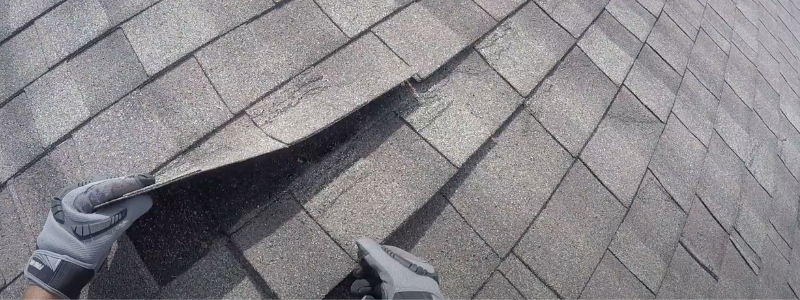
How Can You Assess The Wind Damage That Asphalt Roof Shingles Have Experienced?
Assessing the wind damage that asphalt roof shingles have experienced isn’t always easy, especially since the effects of wind damage aren’t always very noticeable. If you go onto your roof and assess the asphalt roof shingles carefully, while looking for a few key things, it shouldn’t be too hard to assess whether or not your asphalt roof shingles have been damaged by the wind.
Assessing the wind damage that asphalt roof shingles have experienced can be a challenging task. Most of this is due to the fact that the effects of wind damage aren’t always noticeable – noticing a slightly detached roof shingle is harder than it sounds, for example. But, there are a few key things to look for. If you notice these things, then there’s a good chance that your asphalt roof shingle has suffered from wind damage.
Look for Debris
The first thing to look for is debris. If there is any debris on any of the asphalt roof shingles along your roof, then take note of that debris. Most of the time, this debris will be quite small, so it shouldn’t have had a significant effect. But, if it’s a larger piece of debris – a big tree branch, for example – then make sure to inspect the roof shingle. If the shingle has been bent, detached, or crushed, then that asphalt roof shingle must be replaced.
Look for Damaged Roof Shingles
The second thing to look out for is any asphalt roof shingle that has a crease on it. If an asphalt roof shingle has been pushed off of the roof, if only slightly, and bent, then there’s a good chance it has pushed against another shingle. When this happens, a crease is left behind, and this crease usually looks like a slightly messy line or scratch across the shingle. If you notice a crease, then check to see if the creased shingle is loose at all. If it isn’t, check the shingles to the sides, because those may have bent and then scratched the creased shingle.
Look for Detached Roof Shingles
The third and final thing to look out for is any asphalt roof shingle that appears slightly detached from the roof. If an asphalt roof shingle doesn’t appear to be lined up with the shingle behind or in front of it, then that’s a sign that it’s been detached from the roof. By inspecting that shingle, you will be able to determine whether or not it has been detached, if only slightly, from the roof.
Trust the Experts in Wind Damage Roof Repair
If you just aren’t sure what to look for or how to look for it, then there’s no need to worry. At B&M Roofing, we offer a free inspection. By hiring us, we will look at your roof and determine whether or not any wind damage has taken place. From that, we will begin formulating a plan on how to fix that wind damage in the best and most affordable way possible!
- Assessing the effects of wind damage to asphalt roof shingles can be difficult
- If you take the time to look for three key things, though, then it’s usually much easier to notice and assess the wind damage that has taken place
- If there is any debris on the asphalt roof shingles, inspect the shingle and make sure it hasn’t been bent, crushed, or detached
- For bent shingles, notice if any shingles have a crease running across them,
- If they do, inspect the shingle and the shingles around them to see if any of them are slightly detached or bent
- Take the time to look for any asphalt roof shingles that look slightly detached
- If they look slightly detached, there’s a good chance that the wind has weakened the bonding between them and the roof
- At B&M Roofing, we offer a free estimate that will help you assess the wind damage to your asphalt roof shingles while formulating a plan for safe and affordable repairs
Tar And Gravel Roof Lifespan
Out of all the built-up roofs that can be installed, tar and gravel roofs are some of the best. Tar and gravel roofs consist of built-up tar and gravel, which allows for extreme durability. Even though tar and gravel roofs are so durable, though, they have a very particular lifespan. Just like any other roof, once that roof goes past its lifespan, it must be replaced. By knowing about this lifespan, though, and the signs to look for, you will be able to replace your tar and gravel roof at the right time while keeping it in tip-top shape.
What Are The Benefits Of Having A Tar And Gravel Roof?
Tar and gravel roofs offer a plethora of benefits. Each one of the benefits that tar and gravel roofs offer allows for extreme durability. Due to the affordability that tar and gravel roofs offer, they are an excellent choice of roof if you need something that’s durable and very inexpensive.
Easy to install
Tar and gravel roofs are, compared to many other roofs, quite easy to install. A tar and gravel roof consists of several layers. Setting up these layers and constructing the roof is quite easy, due to the simplicity of the process. But, with that being said, it can be a tedious process, and if you’ve never done it before, hiring a professional is definitely the safest choice.
Waterproof
A tar and gravel roof is completely waterproof. Due to the waterproof nature of tar and gravel roofs, they are great for places where heavy rain is a frequent occurrence. But, along with that, the waterproof nature of tar and gravel roofs allows them to withstand intense weather conditions, such as the frequent snowstorms that Colorado experiences.
Energy-efficient
Every tar and gravel roof is, across the top of its surface, coated in gravel. Sunlight is reflected off of this gravel coating, which prevents the roof from breaking down due to the sun’s intense rays. Since tar and gravel don’t absorb sunlight, either, this keeps the building that the roof is protecting nice and cool.
Low-maintenance
Since tar and gravel roofs are so durable, they are easy to maintain. It is uncommon for tar and gravel roofs to require intense maintenance, due to their durability, and if something is wrong, you can usually tell very quickly. One of the most common problems that tar and gravel roofs experience is that of being punctured, and it’s usually easy to tell if this is the case. This ease-of-maintenance combined with the durability and affordability that tar and gravel roofs offer makes them great for Colorado homes and businesses!
How Long Does A Tar And Gravel Roof Last?
A tar and gravel roof will last, on average, anywhere from 20-years to 25-years. That is a fairly standard lifespan for a roof – asphalt roofs, for example, last around 20 years. The exact lifespan of your tar and gravel roof will depend on a few factors. If you take care of your roof and ensure that it receives proper maintenance on a regular basis, it will last for a long time, making it a great investment.
A tar and gravel roof has an average lifespan of 20 years to 25 years. If you compare that to other roofs – asphalt roofs, for example, you will find that 20-to-25-years is a pretty standard lifespan. It is not as long as the lifespan of tile and slate roofs, to name just two examples, but it’s long enough that you won’t have to replace it with any degree of regularity.
The exact lifespan of your tar and gravel roof will depend on the state of tar and gravel roof. If it is not being inspected and maintained on a regular basis – at least once a year – then it’s very likely that the roof will last for less than 20 to 25 years. But, if it is being inspected and maintained on a regular basis, then it should have no problems lasting for as long as its average lifespan allows for.
Proper Tar and Gravel Roof Maintenance
To maintain a tar and gravel roof, ensuring that it lasts for many years, it’s important to inspect the roof at least once a year. There are two common problems that tar and gravel roofs frequently experience, that it’s important to check for. These problems consist of ponding, which is when water pools up along one part of the roof, and punctures, which are holes in the roof. Both of these problems can be easy to fix, but if they are left untreated, they can easily lead to leakages and roof decay.
Every year, make sure to closely inspect the gravel that lies across the surface of the roof. The gravel that lies across a tar and gravel roof is exceptionally important because it protects the roof from sunlight. If the roofing membrane – the part of the roof that lies underneath the gravel is exposed – has no gravel covering it, then the intense rays of the sun can break down the membrane and cause the rest of the roof to degrade.
- A tar and gravel roof will last 20 to 25 years – that’s a pretty average length for a roof
- The exact lifespan of your tar and gravel roof will depend on its current state
- If it is being inspected and maintained at least once a year, then it should last for a long time
- If it is not, however, then various problems and difficulties can easily arise
- Inspecting the roof once a year, and fixing any problems that come up, is the best choice
- While inspecting the roof, try to notice if there’s any ponding taking place or any punctures along the roof
- The most important thing you need to check for, on any tar and gravel roof, is the current state of the gravel
- If there is not enough gravel on the roof, then you need to add some
- Without the gravel, the roofing membrane is exposed, which can lead to the sun’s rays penetrating the roof and damaging it
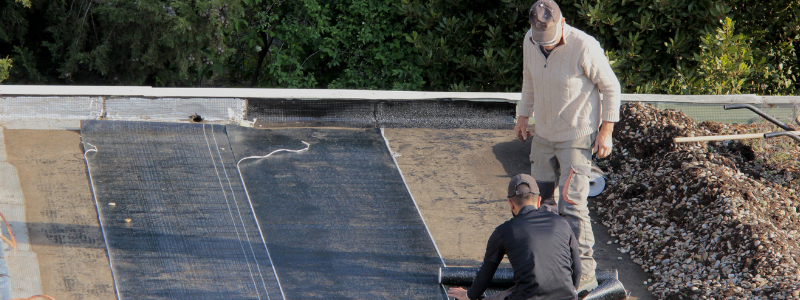
When Should A Tar And Gravel Roof Be Replaced?
A tar and gravel roof will last anywhere from 20 years to 25 years if it is being properly maintained. Past the 20-year mark, though, most tar and gravel roofs begin to show signs of their age, and that’s when they should be replaced. If you have been relying on a tar and gravel roof for less time than that, and it is already showing problems, then replacing it earlier may be a wise choice. Replacing it sooner rather than later is often the best choice since the tar and gravel roof will begin to decay, making it more difficult for it to protect your home or business from the elements.
When a tar and gravel roof isn’t maintained properly, though, it may need to be replaced earlier than 20 years. If there hasn’t been enough gravel on the roof, for example, then part of the roof membrane may have already been severely damaged. This issue will only lead to further decay and rot. In situations like this, it’s often best to replace the tar and gravel roof as soon as possible, since the damage has already been done.
Common Problems with Tar and Gravel Roofs
One of the most significant problems that often leads to a necessary replacement is that of poor installation. A tar and gravel roof must be installed properly because if it isn’t, there are two problems that can easily take place. If the individual layers of the roof aren’t connected properly, then large leakages can form. But, if the layers are connected properly, and the hot tar hasn’t been applied properly, the hot tar may burst into flames and destroy an entire property.
If your tar and gravel roof is reaching the end of its lifespan, it’s time for a replacement. Say your roof has been without gravel or is suffering from persistent punctures, a replacement is ideal. Perhaps your roof wasn’t installed properly, then it must be replaced as soon as possible.
Regardless of your tar and gravel roofing needs, B&M Roofing can help you.
B&M Roofing Are Tar and Gravel Experts
Regardless of your tar and gravel roofing needs, B&M Roofing can help! If you need a tar and gravel roof, would like to replace your current tar and gravel roof, or need an inspection, B&M Roofing is here for you.
For more information on tar and gravel roofs and what you need to know, you can check out B&M Roofing’s other articles!
Tar And Gravel Roof Removal
For a durable flat roof, you can’t go wrong with tar and gravel. Tar and gravel roofs are affordable, exceptionally durable, and long-lasting. But, even though tar and gravel roofs are excellent, there are several reasons as to why someone might want to and should remove them.
What Are Tar And Gravel Roofs?
A tar and gravel roof is a roof that consists of asphalt sheets, hot tar, and roofing felt. Together, these elements offer excellent roof protection and enhanced durability for both the roof and the home/business that the roof is protecting. Every single tar and gravel roof consists of multiple layers, each one containing those exact same materials. Right on top of a tar and gravel roof, there is a small layer of gravel, which protects the bottom layers from excessive sun and moisture while also holding those layers together.
- A tar and gravel roof is a roof that consists of asphalt sheets, hot tar, and roofing felt
- Every tar and gravel roof consists of multiple layers and the top layer is gravel
- By having this gravel on top, the roof is held together and the gravel can protect the bottom layers from excessive sun and moisture
What Are The Advantages And Disadvantages Of Tar And Gravel Roofs?
Every year, Colorado experiences a significant amount of snow and a decent amount of rain – around 300-days of sunshine, 17-inches of rain, and anywhere from 60-to-100-inches of snow, as per the statewide annual average. Both of these elements can easily seep into an unprotected flat roof and damage the interior of the property that the roof is protecting.
But, with a tar and gravel roof, it is much more difficult for the elements to damage the interior of a property. More and more homes and businesses are using flat roofs, but in order to ensure those flat roofs are protected, the flat roofs must be made of strong and durable materials. Tar and gravel roofs are ideal for that since they offer a wide variety of protective measures that keep the elements out of a home/business.
Advantage – Durability
Tar and gravel roofs are exceptionally solid and, due to their multi-layered nature, they are extremely dense. Because of these qualities, tar and gravel roofs are capable of preventing excessive moisture from flowing through the roof and into the interior of a home/business. But, it is worth noting that, in the areas of Colorado where there is an extreme amount of snow and rain – the mountains, for example – tar and gravel roofs can fall apart far more quickly.
Advantage – UV Protection
To go along with that, tar and gravel roofs offer excellent UV protection. This UV protection allows tar and gravel roofs to last for multiple decades because the sun doesn’t cause the materials that comprise the roof to actively break down and decay.
Advantage – Affordability
Even though most flat roofs tend to be pricey, tar and gravel roofs are very affordable. Due to this affordability, tar and gravel roofs are excellent for homeowners and business owners who need a strong, durable, and long-lasting flat roof, but don’t have the money to spend on, for example, a PVC flat roof.
Disadvantage – Improper Installation
The most notable disadvantage of owning a tar and gravel roof is that, if they are improperly installed, they can easily lead to significant damage. For example, if the hot tar isn’t applied properly, it can burst into flames and destroy an entire property. Even if the hot tar is applied in the proper manner, if the individual layers aren’t connected properly, significant leakage issues can follow.
Those are just two examples of what the improper installation of a tar and gravel roof can lead to. But, beyond those problems, tar and gravel roofs are simply quite difficult to install and very heavy, which can be inconvenient to deal with.
- Every year, Colorado experiences a lot of snow and rain
- Most flat roofs require extra protective measures to protect against that snow and rain since water can be trapped on a flat roof
- Tar and gravel roofs offer that protection since they consist of multiple layers, all of which are very durable
- To go along with that, tar and gravel roofs are a great fire retardant and they protect against UV rays, which allows them to last for many decades
- If a tar and gravel roof is improperly installed, it can lead to very significant problems
- Problems such as the hot tar bursting into flames and significant leakage issues
- Beyond that, tar and gravel roofs are very difficult to install and very heavy, which can be very inconvenient to deal with

Why Should Tar And Gravel Roofs Be Removed?
A tar and gravel roof is only meant to last for around 20-to-30-years. Once that point has been reached, it’s time for a tar and gravel roof removal. That is one of the most common reasons for a tar and gravel roof being removed. But, along with that, tar and gravel roofs may also need to be removed due to having been improperly installed, experiencing too much sun and moisture damage, or being unsuited for the needs of a particular property.
Even though tar and gravel roofs are very strong, they are only meant to last for around 20-to-30-years. Once they’ve reached that point, tar and gravel roof removal is the best choice, as the roof is no longer able to protect the interior of the property from the elements.
As mentioned earlier, if a tar and gravel roof is improperly installed, it can lead to significant issues. Significant issues such as the hot tar bursting into flames, and damaging the entirety of the property, or excessive leakages. If a tar and gravel roof is improperly installed, then it must be removed.
More often than not, even in places where there is heavy rain and snow, tar and gravel roofs will hold up quite well. But, if that rain and snow don’t have anywhere to go, and stays on the roof for too long, this can lead to roof depressions, which are sunken areas of the roof that have experienced too much moisture. These can be filled in, but if there are too many of them, or if new depressions are created on a frequent basis, then the tar and gravel roof is unsuited for the needs of that particular place and it should be removed and replaced.
- Tar and gravel roofs are strong, but they are only meant to last for 20-to-30-years; past that point, and they need to be replaced
- If a tar and gravel roof is improperly installed, it must be removed, because it can cause significant damage to the rest of the roof and the property
- Even though tar and gravel roofs can be quite useful in places with heavy snow and rain, certain problems can easily arise
- Problems such as depressions being created along portions of the roof and excess moisture being on the roof for too long
- If there are too many depressions being created, and there’s already a good drainage system, then that means the roof is unable to meet the needs of that particular place and should be removed and replaced
What Does It Take To Remove A Tar And Gravel Roof?
Tar and gravel roof removal is often long and difficult, due to the density and durability of tar and gravel roofs, yet not particularly complicated. Replacing the tar and gravel roof is far more challenging and consists of many more variables, which is why it’s best left to professionals.
For proper tar and gravel roof removal, a roofing tear-off shovel, carbide roofing cutter, and pry bar are all necessary. By having these tools, the upper layers of the tar and gravel roof can be removed, the individual layers of the roof can be sliced into, and then those layers can be pried off.
Even though the process isn’t particularly complicated, it is difficult and it can be unsafe. Because of that, if you aren’t sure what to do, hiring a professional is the best choice. And, when it comes to installing a new roof, hiring a professional is always the safest, easiest, and best choice.
Professional Tar and Gravel Roof Removal
By working with B&M Roofing, we will help you determine what your roofing and budgetary needs are, what is right for your roofing and budgetary needs, and what roof will best fulfill those needs. The installed roof will be strong, sturdy, and completely safe.
- Tar and gravel roof removal is often long and difficult, but not complicated
- All you really need is a roofing tear-off shovel, carbide roofing cutter, and a pry bar
- By having those three tools, you can remove the upper layers of the roof, slice into the bottom layers, and pry those layers off
- Hiring a professional for that process is often the best choice if you don’t know what you are doing
- For replacing that roof, hiring a professional is the best choice because it is the safest and easiest choice
By hiring B&M Roofing, we will work with you on determining your budgetary and roofing needs and then fulfilling those needs in the best way possible.
30 Year Roof Shingles
Today, you can find roof shingles that are designed to last for specific periods of time. Periods of time such as 15 years, 20 years, and 30 years, among others. Right now, 30-year roof shingles are quite popular due to costing less than longer-lasting roof shingles, while also lasting a fairly long time, being made of strong materials, and being able to withstand Colorado’s intense weather.
What Are 30-Year Roof Shingles?
In today’s roofing market, there are many different roof shingles that you can purchase. Most of these roof shingles are designed to last for a very specific period of time. You can easily find roof shingles that are designed to last for 15 years, 20 years, and 30 years, among other shingles that last even longer lengths of time. Each one of these roof shingles is designed a little differently, due to the materials that they use, their length, and the durability that they offer.
It is no secret that a new roof – or even just roof maintenance and repairs – are relatively expensive. It is also no secret that due to Colorado’s frequent bouts of intense weather, roof repairs and replacements are not uncommon.
Right now, there is a wide variety of different roof shingles that you can purchase. Most of these roof shingles are designed to last for a specific period of time. Each one of these roof shingles is designed to last for the exact amount of time that they advertise, and to do this, they are often thicker than shingles designed to last for less time and they are also made of slightly different materials.
Just as the name implies, then, they are ones that are designed to last for 30-years. Since they are designed to last for 30-years, they are thicker and stronger than other roof shingles. This not only allows the roof shingles to last longer, but it also makes common forms of weather damage – snow and ice roof damage is quite common in Colorado – which, of course, allows your roof to last for longer while reducing the need for repairs.
- Roof maintenance and repairs aren’t always cheap
- Colorado experiences frequent bouts of intense weather, leading to the necessity for roof repairs and replacements
- There are a wide variety of different roof shingles that can be purchased, these roof shingles are often designed to last for specific periods of time
- Some of the most popular roof shingles are 30-year roof shingles
- They are durable – designed to last for 30 years; they are thicker and stronger than other roof shingles, allowing them to last longer and to protect roofs against Colorado’s intense weather

What Sets Them Apart From Other Shingles?
If you compare them to, for example, 15-year roof shingles, you will notice a few differences. None of these differences is particularly large, or even that noticeable, but they transform the durability and stability of your roof. Because of this, 30-year roof shingles are stronger and sturdier than 15-year roof shingles.
The most notable quality that sets 30-year roof shingles apart from roof shingles that have been designed to last for shorter periods of time is their thickness. If you look at 15-year shingles, you will find that most of them are relatively thin with few layers. Most of them are strong enough to handle intense weather, and they can last for 15-years, but they aren’t thick enough to protect against especially intense weather or to last for much longer than 15-years. But, 30-year roof shingles can be twice the size of 15-year roof shingles due to their enhanced thickness.
To ensure that each layer is connected to one another in a sturdy manner, 30-year roof shingles use better adhesive and lots of it. Most 15-year roof shingles use good adhesive, as well, but they often use less of it and the durability of the adhesive is often not to the standard of a 30-year roof shingle.
For roof shingles to be sturdy and durable, they must use strong materials. More often than not, 30-year roof shingles use the same basic materials that 15-year roof shingles use. These are materials such as wood, asphalt, and slate; among various others. But, most 15-year roof shingles use recycled materials, whereas 30-year roof shingles use new materials. That way, the shingles that comprise the roof are stronger and sturdier. Plus, there is less filler within the shingle.
The last difference that must be considered is the price. Just as you would expect, 30-year roof shingles are more expensive than 15-year roof shingles. Much of this is due to the materials that comprise the shingles as well as their thickness and density. These factors lead to roofing shingles that cost more money, yet last longer than 15-year roof shingles and, generally speaking, serve as a great investment.
- The main difference that sets these apart from other roof shingles is the thickness
- They are much thicker than 15-year roof shingles, among others, and that’s because they have more roofing layers
- More adhesive is used than other roof shingles; that way, each layer of shingle is connected to one another
- 30-year roof shingles often use the same materials that other roof shingles use, but they use less recycled material and there’s less filler in each shingle
- The price of 30-year roof shingles is more than that of a 15-year roof shingle, due to the density and material
Are 30-Year Roof Shingles Right For You?
A roof is an investment, and this is especially true of the shingles that comprise the roof. If you do not wish to spend a lot of money and have no need for an especially-strong or long-lasting roof, then this type of shingles may not be very useful to you. If you would like your roof to last for many years, and you would like to minimize the need for roof repairs, then they may just be right for you.
A good roof is a significant investment. But, the dividends that this investment can pay off are often more than worth the initial costs.
When you invest in them, you get roof shingles that are strong, sturdy, and long-lasting. By doing this, you ensure that your roof will last for a long time, with minimal issues, and that the interior of your home is protected.
For many people, this makes 30-year roof shingles a great investment. But, they can be expensive, and if you are uncertain as to whether or not you will move, then they may not be a great choice because they affect very little of your home’s resale value.
The best way to determine whether or not 30-year roof shingles are right for you is to concern your needs and wants, as well as your budget.
Here, at B&M Roofing, we can help you ask and answer those questions. Then, when you’re ready for the new roof, we can help you build and install it!
Roofing in the Rain
Mother nature can be unpredictable. Even with advancements in weather tracking and our daily consumption of weather forecasts, there’s no guarantee a rainstorm won’t strike. As a professional roofer, roofing in the rain is not an ideal setting. Reputable roofers across Colorado usually provide their due diligence when it comes to assessing and scheduling a new roofing job. Because the weather in the Centennial State can be volatile, preparation is key. Providers of Colorado residential roofing services should have a plan in place to handle extreme weather, especially if roof work is already underway.
In general, the ideal weather conditions for roofing are clear, warm days. Why? A home or commercial building can sustain water damage during roof replacement if rainy conditions are too frequent. It doesn’t mean it’s impossible to install a reliable roof in adverse conditions, just that more precaution and measures should be taken during inclement weather.
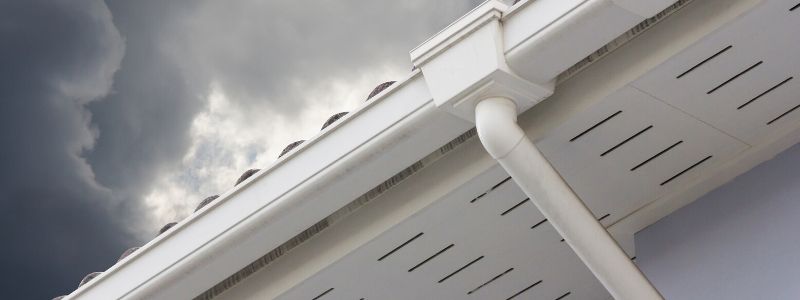
Rainstorms in Colorado
Colorado’s extreme weather is often a sore spot for many roofers. On one hand, B&M Roofing specializes in hail damage and repair, so we’re always adequately prepared for those fixes and scenarios. However, a damaged roof isn’t the only worry when roofing in the rain. Other issues that can occur such as rain create slippery conditions that make roof-work hazardous. The best bet is hiring an insured, safe roofer. If it starts to rain or drizzle, the roofers should act quickly to cover your OSB – most likely with a tarp.
Damage From Roofing in the Rain
What type of damage can be done when roofing in the rain? This is an important question because it may help to answer whether or not your roofing company is taking proper action to protect a new residential roof install.
Rainstorms can cause water damage to the roof decking. Roofs are framed with rafters or trusses and must be covered with sheathing or decking. Decking should be in place before other roof materials can be applied. The most common materials for this are oriented strand board (OSB) or plywood. The roof decking should never sustain water damage for the following reasons:
- Installing roof material over wet or wrinkled barrier (decking) is against roofing code in most areas
- Shingles will not adhere properly to wet roof decking like OSB
- Keeping water trapped in roof decking can cause the roof to eventually swell or buckle
- Trapped moisture can cause mold and mildew growth
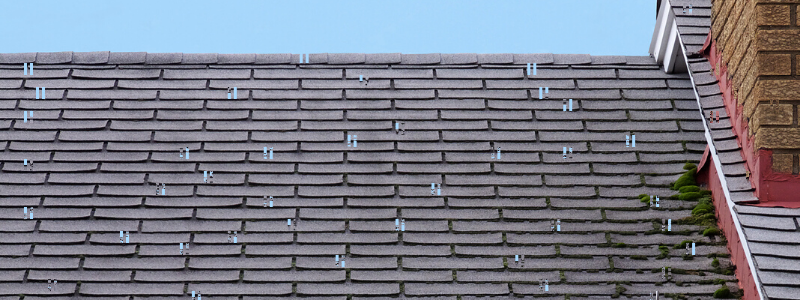
If a roofer has already started working on a new residential roof install and it happens to rain, they should act immediately. First, they should make every attempt to cover the roof decking and other exposed materials. A wet roof should:
- Dry properly, especially if it’s swelling
- Sanded or replaced altogether
When roof decking is wet, it can swell. If a roofing contractor were to lay roofing materials over wet decking, it could cause moisture to become trapped. Consider meeting with a roofing contractor prior to hiring as they should be able to explain various building codes in your area and disclose tactics to avoid roofing in the rain.
Roofing Warranties
What other impacts does roofing in the rain carry? If you didn’t already know, new roof installations usually (and should) come with two types of roofing warranties. A reputable company will provide details for both:
- Manufacturer Warranty
- Craftsmanship/Workmanship Warranty
Manufacturer warranties will guarantee the durability of the roofing material you’ve selected for your home. The warranty will usually vary by roofing type such as asphalt shingles, metal, tile, or shake and usually ranges from 25 to 50 years. However, a manufacturer does not guarantee the product warranty unless the roofing contractor adheres to set guidelines. For example, the manufacturer is not liable for damage that results from faulty workmanship. If a roofing installer decides to work under less-than-ideal weather conditions, such as rain, it could lead to your manufacturer voiding their warranty. Avoid bad workmanship at all costs!
Emergency Repairs in the Rain
If you’re experiencing leaks and damage during a rainstorm, don’t panic! While roofing services should avoid severe rainstorms, experienced roofers should have temporary fixes when a rainy day is unavoidable. Emergency roofing repairs should make immediate fixes to protect your home from extensive damage.
Note: Colorado is notorious for hail and rainstorms. Unfortunately, storms can wreak havoc on homes throughout Colorado state, costing thousands in damages and repairs. Storms also entice dishonest roofing contractors who are looking to scam panicked homeowners. An untrustworthy contractor may tell you that it’s okay to install shingles on a wet surface in order to get the job done quickly. Think twice before you hire roofers that appear to be in a rush. If it’s been raining, time is the only way to ensure damage control is met.
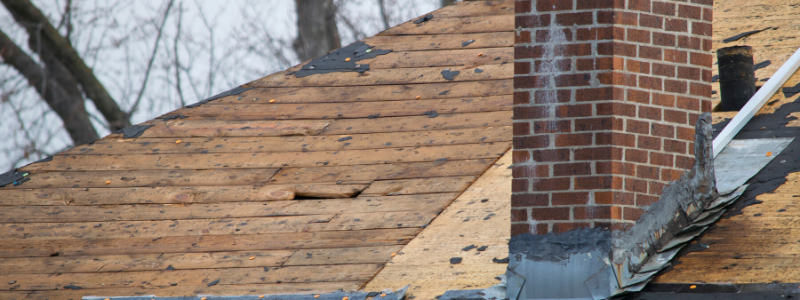
Avoid Roofing in the Rain
All in all, the best practice for any roofer is to avoid roofing in the rain. Considering the various issues that can occur, it’s worth it to take time to evaluate weather conditions and assess the time of year to consider a roof replacement. That said, there are many instances where the rain is unavoidable and unpredictable. In these instances, be sure you’re working with a roof that considers all possibilities and has a dedicated backup plan in the event of inclement weather. Steps should be taken to protect existing materials and completed work. Delaying a repair or replacement for a few days is well worth the wait. Rain can be extremely unforgiving, but the good news is, it won’t last forever.
Considering a new roof replacement? Contact B&M Roofing in Colorado. As a highly reputable company, we offer a variety of services for commercial and residential properties throughout the state. We can help you decide the best materials and we’ll be forthright with our process and planning. Contact us directly at (303) 443-5843.
How Often Should I Have My Roof Inspected
Every roof is a little bit different. Because of that, it isn’t always easy to say when, exactly, a specific roof should be expected. That’s why there are specific guidelines and recommendations that have been developed, over the years, regarding how often your roof should be inspected and the kinds of factors that will greatly affect your roof. Being aware of these guidelines and factors will make it easier for you to maintain the quality of your roof, while also knowing when its time for your roof to have a professional inspection. Find out below: how often should I have my roof inspected?
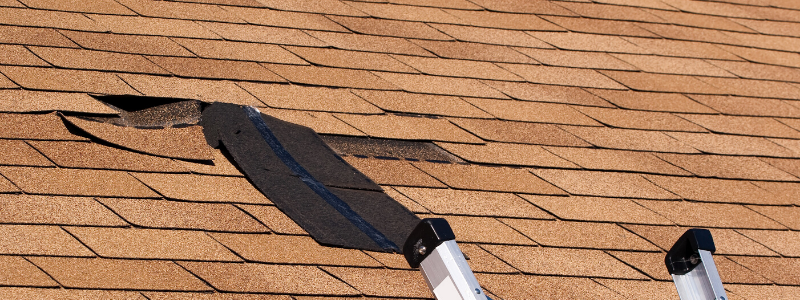
What Affects Your Roof?
The quality and stability of your roof are affected by a wide variety of different factors. The most important factors, though, are the ones that relate to the weather. Factors such as rain, hail, snow, and the sun. Each one of these different factors will affect the quality and stability of your roof in various ways.
Every year, Colorado experiences a fair amount of rain, a decent amount of hail, a lot of snow, and plenty of sun. Because of that, most residential and commercial roofs are capable of handling those elements. But, this certainly doesn’t negate the fact that those elements can have a significant impact on the quality and stability of your roof.
If there’s a significant amount of rain, it isn’t uncommon for the shingles on that roof to absorb the moisture. When this happens, it’s inevitable that the shingles will weaken, which leads to those shingles falling off. If that doesn’t happen, though, too much rain can also lead to the shingles rotting, which means they take longer to fall or create mold. Mold is especially bad as it can degrade not just that shingle, but the entirety of your roof.
More often than not, heavy rain isn’t a significant issue. But, hail can lead to very big problems that affect your roof in a variety of less-than-pleasant ways. In fact, Colorado usually experiences three-to-four catastrophic hail storms every year, and each one of these hail storms often leads to over $25 million dollars in insured damage. The reason for this is that hail is quite strong, and it comes down at a quick pace. This can lead to gutters being dented and cracked open. But, it can also lead to entire shingles breaking down, or the granules that comprise the shingle falling off. If any of those things take place, it isn’t unlikely that the entire roof would begin to fall apart.
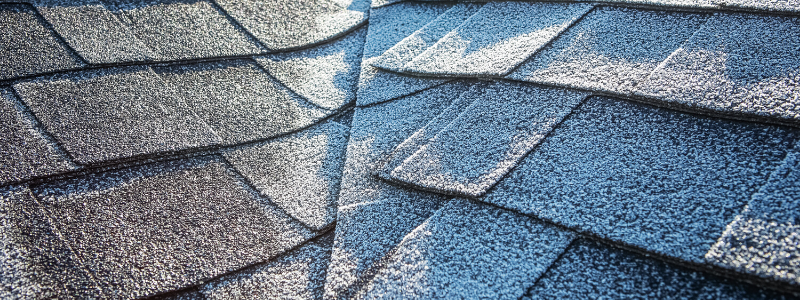
Since Colorado experiences so much snow, snow-related roof damage is incredibly common. Usually, snow-related roof damage occurs due to one of three things. If there is too much snow on a roof, it can lead to that roof collapsing. If there is a lot of snow on a roof, when that snow melts and then freezes again, it will expand and damage the foundation of the roof along with a large portion of the roof. If the roof isn’t particularly stable or dense, then all of that melted snow can flow through the ceiling and into your home, leading to cracks in your roof, damaged walls, and other issues.
The sun has a significant effect on your roof, but this effect often takes place over time. As the sun’s rays shine down on a roof, the roofing material expands, and then it contracts as the sunsets. This can lead to the roof becoming less and less stable, leading to leaks, cracks, and other problems.
How Can You Inspect Your Roof On Your Own?
A professional inspection will always be preferable to that of a do-it-yourself inspection. The reason for this is that a professional inspection is far more thorough and elaborate, ensuring that every facet of the roof is inspected and that any problems are noted. But, for the times when a professional inspection simply isn’t an option, a do-it-yourself inspection can be very useful.
To inspect your roof on your own, there are a series of different things that you must pay attention to. By paying attention to these things, you will be able to determine the current quality and stability of your roof. But, it’s important to remember that this inspection is no replacement for a professional inspection. So, if you suspect there’s something wrong with your roof, it’s best to just hire a professional.
Take a look at the material that comprises most of your roof. For many people, these will be the shingles. Make sure to look for any shingles that are either broken or completely missing. If any of those shingles has been dented or cracked, take note of that. The same applies to any other material that your roof is composed of, make sure it’s all there and that it isn’t damaged.
Right after taking a look at the surface of your roof, you need to inspect the gutters. Make sure that your gutters are sturdy, check to see if they’re loose or rusty. Check what’s in the gutters too, if you can. If there are granules from your roof’s shingles, then that means the shingles are breaking down.
To end the process, it’s important to make sure that there isn’t any debris – even just moss, for example – on your roof or in your gutter. If there is – or, even if your gutters have gunk in them – make sure to remove it and to see if it has lead to any damage.
From that, you will have performed a very basic do-it-yourself inspection. If, during the inspection, there are specific areas that you want to inspect, then inspect them. Just remember, though, that this is a very simple inspection and it isn’t a replacement for a professional inspection.
- Performing a do-it-yourself inspection is quite easy, but by no means, replaces a professional inspection
- To perform a do-it-yourself inspection, you need to inspect the surface of your roof to make sure that the material is still present and not damaged in any way
- Right after that, make sure to look at the gutters to see if they are cracked, rusty, or loose
- To end the process, make sure there isn’t any debris on the roof or in the gutters, and if so – even if it’s just moss – remove it and see if any damage has occurred
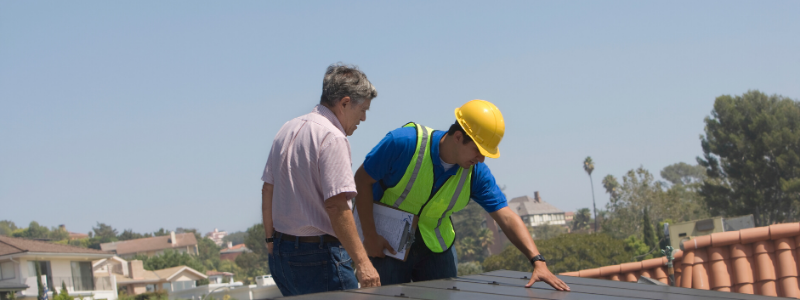
How Often Should I Have My Roof Inspected?
The National Roofing Contractors Association recommends that you have your roof inspected twice-per-year. By having your roof inspected twice-per-year, you can catch and prevent any significant problems before their true effects become apparent. But, if you have dealt with a significant weather event – such as a snowstorm – then it’s best to have your roof inspected sooner rather than later.
As a general rule, having your roof inspected twice-per-year is ideal. That way, you can catch, and prevent, any significant problems before they arise. But, if you experience a significant weather event or some very recognizable damage, then it’s important to have your roof inspected as soon as possible.
Right after roof damage is recognized, or a significant weather event takes place, a contractor can come out and inspect your roof. By doing this, you will learn all about the current state of the roof, the damage that took place, and what can be done to fix it. But, if you wait to do this, the damage may become worse, leading to bigger problems down the road.
At B&M Roofing, we offer a free estimate. By having us come over, you will be able to learn all about the current state of your roof, what kinds of repairs are needed, and how much all of that will cost.
Are Roof Repairs Tax Deductible?
You just cut a check to a roofing company and, a wise homeowner that you are, are looking for a way to get the most benefit from your expense. It’s only normal to wonder, “Are roof repairs tax deductible?” Like most tax-related questions, the answer isn’t as clear-cut as you’d like. There’s a distinction between home repairs and home improvements. Each is defined differently and, for tax purposes, it’s important to understand how each can and cannot be applicable.

What Are Home Improvements?
“Home Improvement” is a term most homeowners will hear more than once. Being able to distinguish between a home improvement and repair is not always straightforward, though. However, the definition is fairly clear and self-explanatory. Home improvement is any update on a residential building that contributes to its over life quality and usefulness. In general, home improvement projects tend to be larger jobs with bigger picture goals, such as a new HVAC unit or complete overhauls and redesigned spaces. The bonus on home improvements is their ability to increase the overall value of a home.
Most home improvement projects have some defining characteristics that include:
- Adapts an existing space or object for a new use
- Adds new space or objects that were not there before
- Upgrades an existing space or object
Some common examples of home improvements include:
- Roof replacements
- Kitchen and bathroom renovations
- Backyard landscape/hardscape
- Building onto an existing structure
- Window replacements
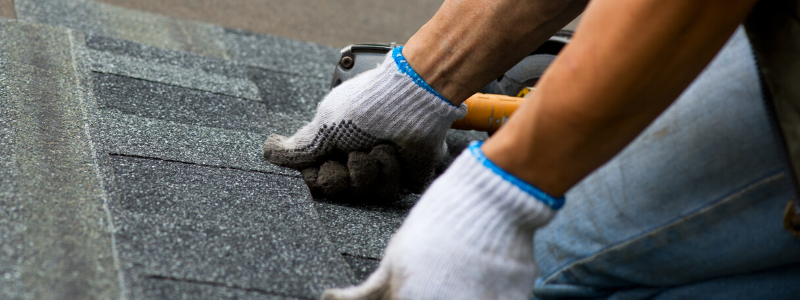
What Are Home Repairs?
Repairs can feel a lot like home improvements and, at times, there is some overlap to the term. In a more general sense, however, repairs are typically jobs that have a much smaller scope. In addition, they serve to help ensure a residential property remains in functioning order and is liveable. Most times, repairs are meant to restore an otherwise broken or dysfunctioning system within a home. It can add value to the home in some instances, but more times than not, repairs are more of a necessity than a clear investment to increase a homes’ sale price. Most times, repairs cost less than home improvements and don’t require a ton of overhaul since their typically smaller projects.
Some of the most common examples of home repairs include:
- Replacing a few roofing shingles, tiles, or repairing a portion of a metal roof
- Repainting a room or bathroom
- Replacing appliances
- Termite damage
- Installing new plumbing pipes
- Fixing a broken sink
- Mold repair
What Are Tax-Deductible Homes Updates?
All of this brings us back to our original question: are roof repairs tax deductible? As with most things tax-related, things can get blurry and very complicated. The quickest answer to this question is: it depends. Home improvements on a personal residence are generally not tax-deductible for federal income taxes. However, installing energy-efficient equipment on your property may qualify you for a tax credit, and renovations to a home for medical purposes may qualify as a tax-deductible medical expense. When it comes to the Renewable Energy Tax Credit, the IRS states “energy saving improvements” made to a personal residence before January 1, 2020 qualify for the credit, which is equal to 30% of the cost of the property installed. Your personal residence can include your primary home and a vacation home.
That said, there are some nuances to these rules. For instance, since home improvements generally improve the overall value of the home, you can file for a tax deduction for years following a big home improvement project. Home improvements must be deducted over a set depreciation schedule.
Are roof repairs tax deductible?
Given that a residential homeowner is attempting to restore something to its original state, home repairs are usually tax-deductible in the same year the work is completed. For example, if your roof repair cost $3000, you can save a certain percentage on your taxes in that same year. Yes, roof repairs are, therefore, tax-deductible. Types of roof repairs to account for include:
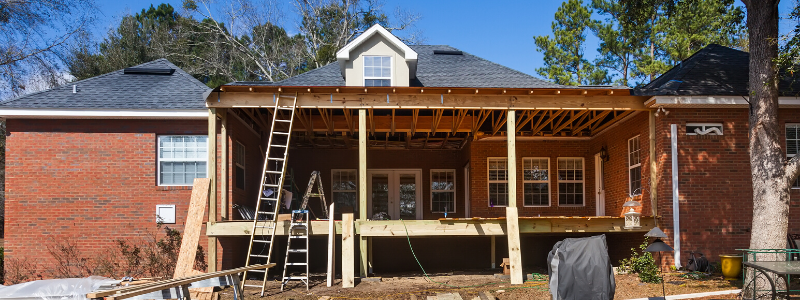
Leaky Roof Repair
The IRS treats repairs and home improvements differently. In the IRS’s eyes, a home repair is any expense made fix broken or deteriorating parts of your home. These expenses aren’t tax-deductible in any way. Fixing a leaky roof clearly falls under the tax man’s definition of a home repair, and won’t give you a break on your next tax bill.
Replacing A Roof: Nuances Explained
The IRS treats home improvements a little differently. Home improvement is an investment you make that improves the condition of your home, or brings it back up to the condition in which you purchased it. In most cases, putting a new roof on your home qualifies as a home improvement, which can help lower your taxes … but just not next April 15.
Further confusing matters, it’s not a deduction you can claim like your mortgage interest or charitable contributions. It’s considered part of the “basis” of your home (essentially, the cost of your home’s purchase plus the expense of all qualifying improvements), that’s used to tally your capital gains taxes when you sell your home. In briefest terms, if you spend $3,000 putting a new roof on your home, it makes your home’s cost increase by $3,000 in the eyes of the IRS.
Unfortunately, you’ll only be able to capitalize on this expense when you sell your home (so save all paperwork), and not in the year you pay for the roof. What’s more, homeowners don’t pay gains on the first $250,000 in profit of your home and double that if you file married. So unless your home appreciates more than $250,000 before you sell it, the cost of your roof improvement is meaningless.
Don’t scoff at the $250,000 mark! Colorado’s home prices are skyrocketing, and many homeowners who have been in a home for several years may be facing selling a home that exposes them to capital gains liabilities.
Are roof repairs tax deductible? There’s no quick and easy answer, but most homeowners (not owners of rental properties) are always best served holding onto documentation for improvements such as a new roof.
Roofer Littleton
As a reputable company, B&M Roofing has offered dependable roofing services for commercial and residential properties throughout the Littleton, Colorado area. We’ve been providing excellent care for our customers since 1947 and continue to strive to uphold the best standards for all roofs we repair, replace, and install. Our homeowners and commercial building managers can depend on our highly qualified team to assess needs, make recommendations, operate safely, and ultimately provide a product that is worth your investment and time. Since roofs come at a significant cost, it’s important to consider the best methods for finding and hiring an expert roofing contractor.
Roofer Littleton – Our Commitment
We operate 24/7 and can provide emergency repairs for Littleton homeowners. B&M is a licensed and qualified roofer in Littleton serving the needs of homeowners and businesses in the immediate and surrounding areas. Our commitment to excellence is evident in the various projects we’ve completed throughout the state, but especially locally. We’re invested in our customers and continue to offer ongoing maintenance and support, whatever your needs. Contact a reliable roofer in Littleton today at (303) 443-5843.
We offer trusted solutions for roofing repairs and new installations designed for Littleton Colorado homes. We can give you the quality roof you’re looking for, worth the investment.
Our roofers in Littleton also take care of businesses and commercial buildings. We can help assess requirements. In addition, we utilize the best roofing materials at competitive prices.
Commercial Roofing Littleton CO
At B&M Roofing, we offer commercial roofing services throughout the entirety of the Littleton suburb. We specialize in commercial roofing services such as commercial roofing maintenance, commercial roofing repair, commercial roofing replacements, commercial roofing inspections, and commercial roof construction.
Within a single-year, Littleton receives an average of 69-inches of snow. All of this snow can easily lead to problems that affect the quality of a commercial roof. Problems such as there being too much snow on a roof, or the snow melting and then freezing; to name just two examples. Both of those problems can lead to a commercial roof becoming weaker and weaker and then breaking down.
Since these problems are so commonplace, due to the amount of snow Littleton receives annually, B&M Roofing offers valuable services that allow you to prevent and fix those problems. Each one of these commercial roofing services is designed to fulfill the exact commercial roofing needs that you have, in the best way possible.
If your commercial roof needs to be inspected, repaired, or replaced, then B&M Roofing will help you do that. If your commercial roof needs regular maintenance, due to previous issues, B&M Roofing will help you do that. If you need to design an entirely new commercial roof, one that can withstand Littleton’s intense weather, then B&M Roofing will help you do that.
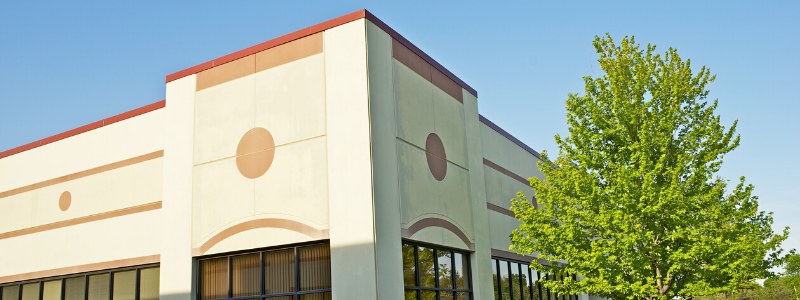
Littleton Roofing for Homeowners
Every year, Littleton is consistently ranked as not only one of the best places to live in Colorado but one of the best places to live in America. As more and more people continue to move to Littleton – choosing to begin new careers and start families – there is a tremendous need for quality residential roofing that can withstand Littleton’s intense weather. Fortunately, B&M Roofing offers expert residential roofing in Littleton.
Since Littleton’s weather can, at times, be rather intense and erratic, residential roofing problems are not uncommon. More often than not, though, these problems are unexpected. That’s why B&M Roofing offers a residential roofing estimate that is completely free. We’ll take the time to evaluate the needs of your existing roof and make recommendations for the best approach on repairs or replacements If your residential roof is experiencing issues – both big and small – B&M Roofing will get down to your residential property and evaluate needs quickly.
Right after B&M Roofing has assessed your residential roof, you will know exactly what needs to be done. If specific repairs need to take place, B&M Roofing will outline what those repairs are, why they’re beneficial, and how much they will cost. If your residential roof needs to be replaced, B&M Roofing will work with you on constructing a new roof.
For residential roof construction, B&M Roofing will consider your specific roofing needs. If there are specific roofing systems you require, a particular aesthetic that you like, or a material that you want – among other needs – B&M Roofing will fulfill those exact needs.
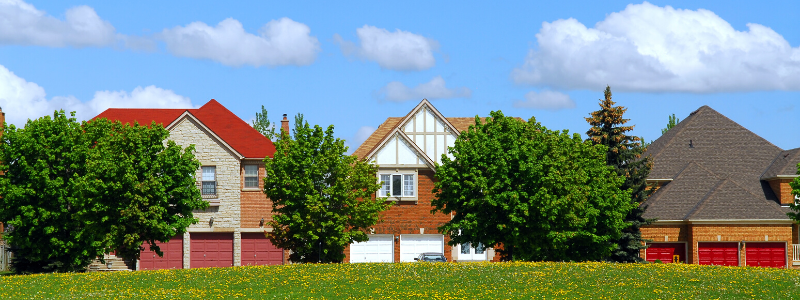
Roofer Littleton – Residential Services
Roof Inspections
Metal Roofs Asphalt Composite Shingles
Hail resistant
Double / Triple Laminate
Dimensional / Architectural / Flat Roofs
Tile and Slate
Concrete
Clay
Quarried Slate
Insurance Estimates
Licensed Insurance Adjusters
General Contracting
Roof Repairs
Architectural Sheet Metal Roofing Services
For the intense weather of Littleton, metal roofs are superb. Due to their strength and durability, metal roofs are able to protect commercial and residential properties from intense snow, ice, and wind; among other weather events. Because of that, B&M Roofing offers services related to the installation, repair, and restoration of architectural sheet metals.
For the intense weather of Littleton, metal roofs are, more often than not, the best choice. Metal roofs are strong, durable, safe, low-maintenance, and they last for a long time. Due to those qualities, they are great at protecting commercial and residential properties from the elements.
Since metal roofs are so useful, B&M Roofing has been offering architectural sheet metal services since 1947. Each one of these services has to do with the installation, repair, and restoration of architectural sheet metals for specific roofing purposes. Purposes such as the development of high-quality metal roofing services, fabricating custom metal sheets for specialized roofs, performing restoration on historical buildings; among a variety of others.
Regardless of the exact purposes that you have, B&M Roofing will work with you directly on performing the architectural sheet metal services that allow that purpose to be fulfilled. Throughout the entire process, you will have complete control over what is being done, so that your metal roofing is exactly the way that you need it.
Quality Roofing Service & Repair
For the Littleton area, B&M Roofing offers repair services for nearly any kind of roofing. It doesn’t matter how big – or small – the roofing project is, nor does it matter what needs to be repaired; B&M Roofing can repair it!
At B&M Roofing, we offer a wide variety of roofing repair services. Services that pertain to roofs and roofing projects of all sorts. It doesn’t matter if a simple residential roof needs to be repaired, or a large commercial roof; B&M Roofing has the expertise and resources to perform the necessary services.
Some of the specific roofing repair services B&M Roofing can provide are as follows:
- roof analysis
- leak identification
- skylight replacement
- roof system repairs
- gutter repair/replacement
- roof coatings
Regardless of the roof that requires those services, and regardless of the specific repair needs that you have, B&M Roofing can repair your roof.
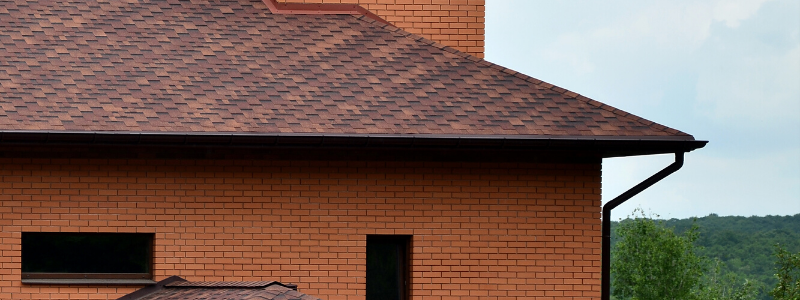
Emergency Roof Repair Services
Unfortunately, roof emergencies are rather common, due to the intense weather that Littleton experiences. Roof emergencies are almost always incredibly disruptive, and that’s why B&M Roofing offers emergency roof repair services. No matter what time it is, or what has happened, B&M Roofing will be there to fix your roof.
Roof emergencies are rather common in Littleton, due to the frequent bouts of intense weather that the area experiences. Because of this, and because of just how disruptive roof emergencies are, B&M Roofing offers 24/7 emergency roof repair services. It doesn’t matter what time it is, or what the emergency is; B&M Roofing will show up and fix your roof.
To make use of the emergency roof repair services that B&M Roofing offers, all you must do is call the around-the-clock emergency roof repair phone number. By doing so, a team from B&M Roofing will be sent out to your location.
When this team arrives, they will begin analyzing the current situation. The damages that have taken place, and what’s needed to repair those damages, will all be logged. From that information, B&M Roofing will then work with you on repairing your roof in a manner that meets your needs.
- B&M Roofing offers 24/7 emergency roof repairs
- B&M Roofing will work with you on repairing your roof in a manner that is right for your needs
What Type of Roof is Best for Snow
Colorado’s heavy snowfall can be impactful for all residential and commercial roofs. Given that snowfall is a regular occurrence in the Centennial State, it’s best to know how to protect your roof from heavy snowfall and the damage it can often inflict. What type of roof is best for snow? With advancing technologies, roofing materials have evolved, allowing for more application and better performance against harsh, inclement weather. Now, there are several types of roofs that offer excellent snow protection.
These are roofs that ensure that, no matter the intensity of Colorado weather, your property is protected. Let’s review a few types of roofs that are best for snow.
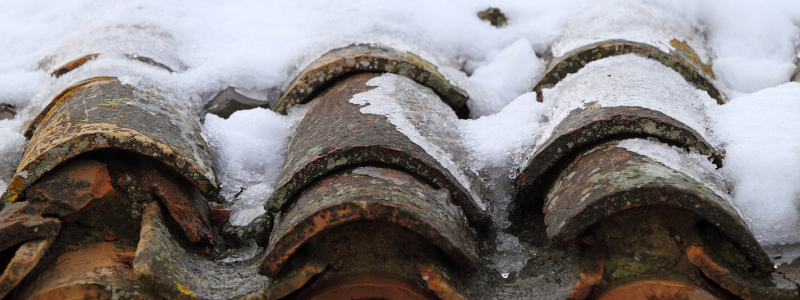
How Does Snow Affect Commercial And Residential Roofs?
Even though commercial and residential roofs are, generally speaking, quite different, the effects of snow are very similar. Most of the problems that snow presents, to roofs, have to do with the weight of snow and whether or not a roof can remain sturdy while being covered in snow. Beyond that, snow can also lead to cracks in the roof, ice dams, damaged gutters; as well as a plethora of other, equally difficult, problems.
One of the most common problems snow causes – to both commercial and residential roofs – is that of straining the roof. Every roof is only capable of holding so much weight, and if there is too much snow on a roof, then that roof will be unable to remain sturdy. When this happens, it isn’t uncommon for a roof to slowly break down or collapse completely.
Even if there’s just a small amount of snow on a roof, that small amount of snow can lead to big problems. This is especially true if the snow melts and then freezes again, turning into ice. When that happens, large blocks of ice can form. These blocks of ice can easily strain the roof, leading to the same problems that heavy snowfall often leads to. Plus, if ice is present on the edges of the roof or in the gutters, then the flashing can be torn off the roof and the gutters can break down.
When there is too much snow on a roof that isn’t well-equipped for it, this can lead to small cracks being created along the roof. These can be difficult to notice – especially if there’s still snow on the roof – but they often lead to significant problems. If water flows into these cracks, it can lead to water leaking into the building. But, if water flows into the crack and freezes, then the crack will grow and expand. If these problems aren’t treated, then the entirety of the roof’s structure can be damaged completely.
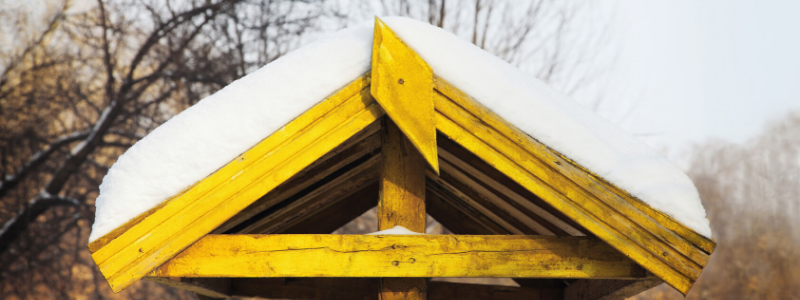
In What Ways Does Colorado’s Weather Affect Commercial/Residential Roofing Needs?
Every year, the state of Colorado experiences, on average, anywhere from sixty-to-one-hundred-inches of snow. Since Colorado experiences so much snow, commercial and residential properties in Colorado must have roofs that are built for snow, as well as the cold temperatures and ice that follow. Without adequate roofing, commercial and residential properties are far more likely to experience damages related to snow, ice, and cold temperatures.
Since Colorado experiences so much snow, and on such a regular basis, residential and commercial roofs must be well-equipped to handle that snow. But, if they aren’t capable of handling large amounts of snow, as well as protecting against ice and cold temperatures, then this can easily lead to damages.
Throughout the years, Colorado has experienced its fair share of snowstorms. Snowstorms are far more severe in their effects, with regards to roof health, than regular snow, because snowstorms bring far more snow than a regular snow event. When a significant amount of snow piles on your roof, this can lead to the roof becoming unstable and breaking down, simply because it isn’t capable of holding that much snow.
When a snowstorm passes, though, and the sun rises – just as it does 243-days of the year, on average – all of that snow will begin to melt. As all of that snow begins to melt, it will fall into the cracks and crevices that are located all across your roof. Alternatively, it may melt, freeze again, and form large blocks of ice that, due to their size, damage a large portion of your roof.
- Colorado experiences a lot of snow, every single year
- Snowstorms are also a relatively frequent experience in Colorado
- Since Colorado experiences so much snow, the probability of roof damage is greatly increased
- Snow, ice, and cold temperatures can lead to roof collapse, cracks forming in the roof, and chunks of the roof falling apart due to ice blocks forming
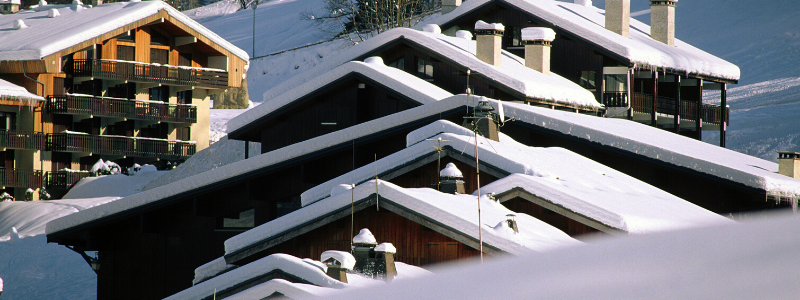
What Type of Roof is Best for Snow?
For commercial and residential properties, there are certain types of roofs that are ideal for the frequent snow that Colorado experiences. These roofs offer features and design traits that allow them to remain strong and sturdy, no matter how snowy, icy, or cold it is. Because of those qualities, these are the best roofs for snow.
Metal Roofing Colorado
For a commercial and residential property in Colorado, a metal roof is exceptionally useful. Since metal roofs are made of metal, they can withstand large amounts of snow piling on top of them. But, along with that, the design of most metal roofs ensures that snow and ice will simply slide off of the roof, rather than becoming stuck to the roof.
Cement Roofing Colorado
Cement roofing isn’t as common, due to its high price, but it’s one of the best roofing materials to have for protecting against the snow. Cement is one of the strongest roofing materials available, and it’s capable of holding a large quantity of snow and ice, while also protecting against heavy winds. Plus, due to the density of cement, no moisture can flow into the middle of the roofing structure and freeze.
Slate Roofing Colorado
Slate roofs are not only quite beautiful, but they’re some of the strongest roofs available. Due to the durability and strength of slate, it’s capable of withstanding heavy snow, hail, ice, wind, and fire. Most slate tiles work well on sloped roofs, as well, making it easy for snow, ice, and rain to flow off of them. But, while slate is a strong material that’s perfect for Colorado’s weather, it is very expensive.
